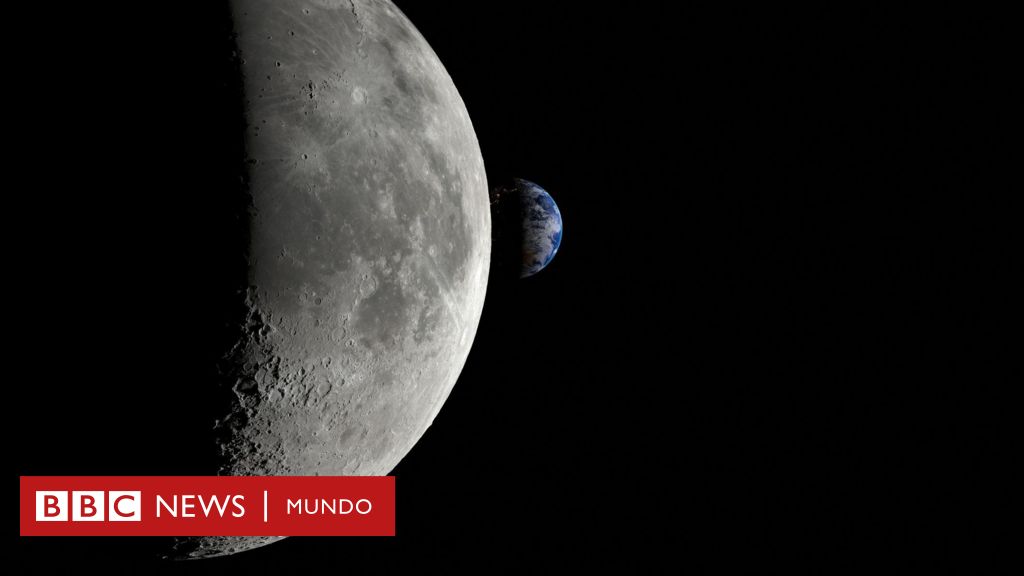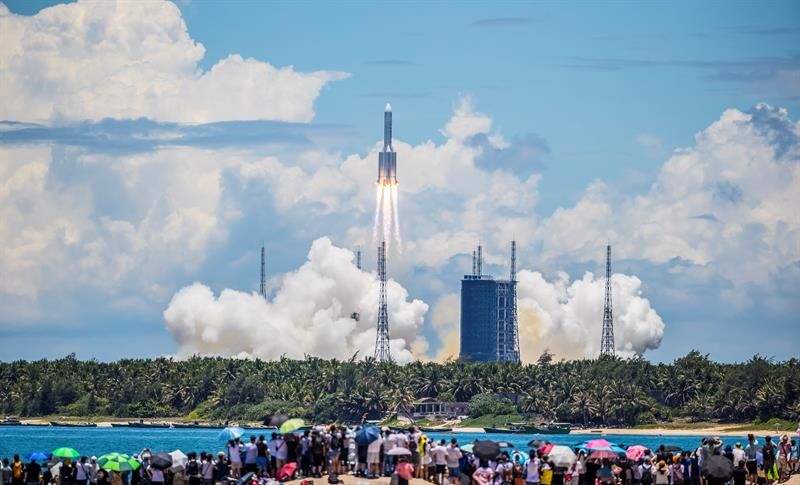image source, Good pictures
- teacher, Draft
- Author's Title, BBC News World
There was a time when part of the moon was an “ocean,” but very different from what we know on Earth.
Scientists have found evidence that the south pole of our natural satellite is covered An ocean of molten liquid rock.
The discovery supports the theory that magma formed the surface of the moon about 4.5 billion years ago.
Remains of the sea were discovered by historical work Chandrayaan-3Launched by India, it landed on the moon's south pole a year ago.
Since then, no ship has yet explored this isolated and mysterious region.
Evidence found
Scientists believe that once the moon was formed, it began to cool and became a so-called lighter mineral Iron anorthosite floated to the surface.
This iron anorthosite — or molten rock — formed the lunar surface, according to new findings of iron anorthosite at the moon's south pole.
“The theory of the early evolution of the Moon is greatly strengthened in the light of our observations,” said Dr Santosh Vadavale, a researcher at the Indian Physical Research Laboratory and co-author of the paper published on Wednesday. Nature.

image source, EPA
Important symptoms before Indian mission The existence of magma oceans has been observed in mid-latitudes Thanks to the studies of the moon, the American Apollo program.
Professor Vandawale and his team were in mission control of Chandrayaan-3.
“Those were the most exciting moments. Sitting in the control room and moving the rover on the lunar surface was a once-in-a-lifetime experience,” Vadavale said.
When the Indian lander called VikramPragyaan, a robot that made a soft landing at the South Pole last August, emerged from the ship.
Pragyan spent 10 days orbiting the lunar surface, while Professor Vadavale and his colleagues worked tirelessly to collect data for him at 70 degrees south latitude.
An important task
The robot is built to withstand temperatures of 70 to -10 degrees Celsius and can make its own decisions about how to navigate the uneven, dusty lunar surface.
He made 23 measurements with the instrument Alpha particle X-ray spectrometer. The instrument excites atoms and analyzes the energy produced to identify minerals in the lunar soil.
A team of scientists has also found evidence that A large meteorite falls 4,000 million years ago in the region.
This collision is believed to have given rise to the South Pole-Aitken Basin, one of the largest craters in the Solar System at 2,500 km in diameter.
It is located about 350 km away from the site probed by the Prayagm rover.

image source, Good pictures
But scientists discovered magnesium Could have come from deep within the moonThrown up by the crash and driven to the surface.
“It could have been caused by a large asteroid impact, throwing material out of this large basin. In the process, it also dug up the deepest part of the moon,” said Professor Anil Bhardwaj, director of the Indian Physical Research Laboratory.
These findings are some of the scientific data collected during the Chandrayaan-3 mission He hopes to find frozen water At the South Pole.
Such an invention will be essential For space agencies' dreams of building a human base on the moon.
India plans to launch another mission to the moon in 2025 or 2026, hoping to collect and bring back samples of the lunar surface for analysis.

Remember that you can receive notifications on our app. Download the latest version and activate them.





